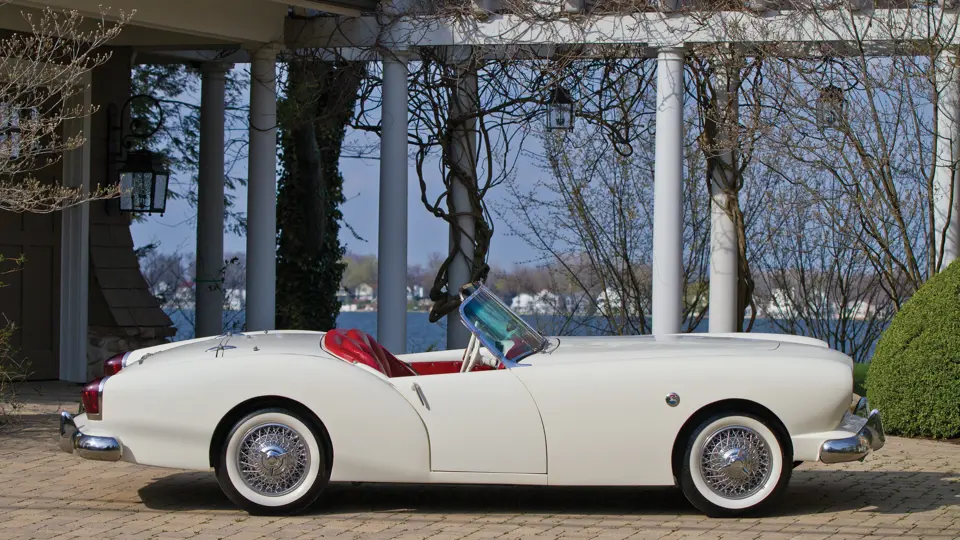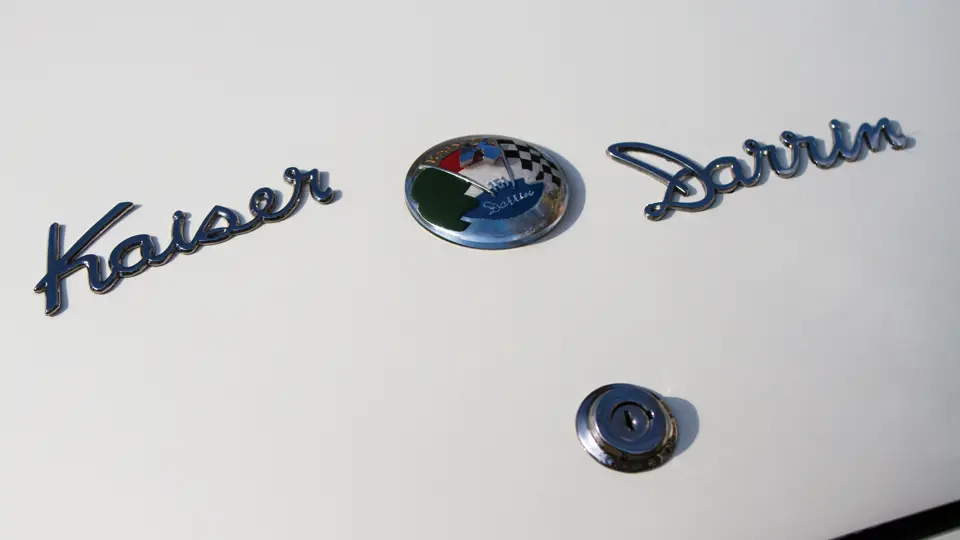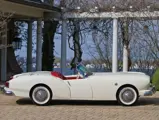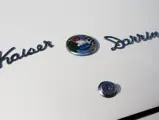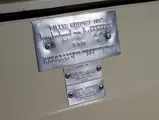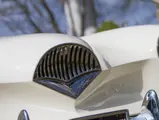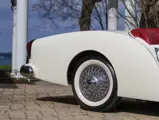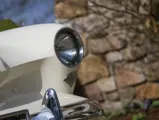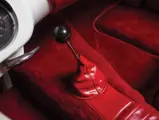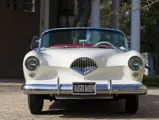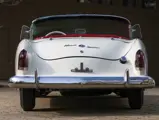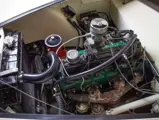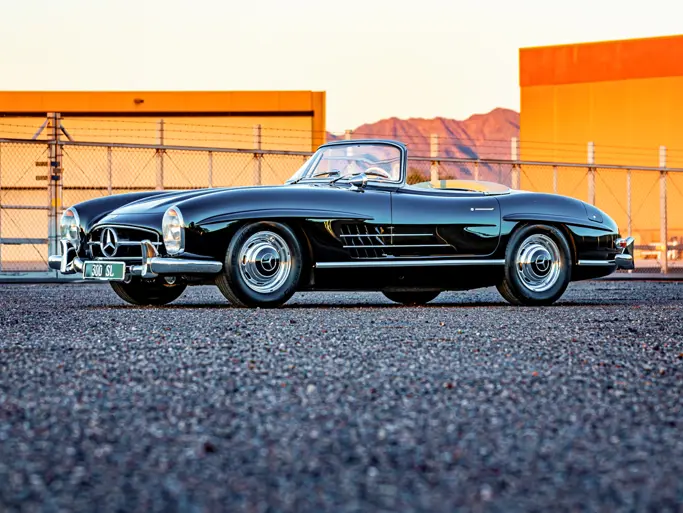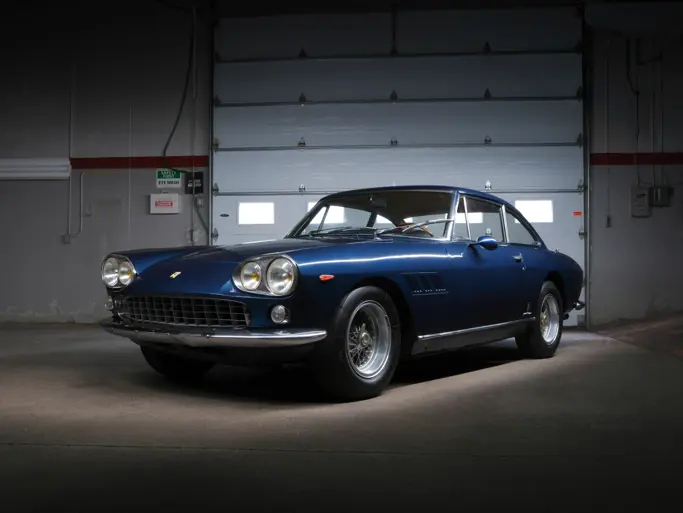Model KF-161. 90 bhp, 161 cu. in. F-head Willys “Hurricane” inline six-cylinder engine, three-speed manual transmission, independent front suspension with wishbones and coil springs, live rear axle with semi-elliptic leaf springs, and four-wheel hydraulic drum brakes. Wheelbase: 100 in.
Legend holds that Howard Darrin’s design for a sports car built of that new post-war miracle material, fiberglass, did not particularly move industrialist Henry J. Kaiser. Kaiser was a practical sort, and there wasn’t much practical about this sporty roadster. For his wife, Alyce, it was another story altogether, and in the end, Henry J.’s salesmanship gave the lady what she wanted.
The Kaiser-Darrin was America’s first production fiberglass sports car, with its prototype built before the Corvette, although production did not begin until 1954. Powered by the reliable Willys six-cylinder engine, its design became a legend of 1950s motoring, with sweeping front fenders that plunged behind the doors into a “Darrin dip,” a split windshield, a distinctive “rosebud” grille, which, it was commented, always looked like it wanted to give someone a kiss. Most fascinating of all were Darrin’s beloved “pocket” doors, which slid forward into the front fenders to permit entry and exit. Darrin promoted sliding doors for decades, claiming that as they did not open into traffic, they were a very safe alternative. They were never an idea that’s time had come, but they were the Kaiser-Darrin’s trademark and have remained its best-remembered feature.
The shame was that the dashing Kaiser-Darrin came at the end of its manufacturer’s, Kaiser-Frazer, decade-long lifespan. The snazzy roadster wound up being a one-year-only offering, with only 435 produced.
The car offered here was the 33rd built and one of the first fifty Kaiser-Darrins to be painted Champagne with a special, unique interior. Maintained by the same owner from 1956 until 2012, it was the recipient of a recent, painstaking, nut-and-bolt restoration, with its colors beautifully recalling its era, and it has under 38,000 actual miles. The standard Darrin three-position top, offering an unbeatable combination of shade and open-air comfort, is still with the car, but it remains original, it has not been restored, and it is not presently installed. Featured in the Kaiser-Darrin Registry, the car is presented with its original owner’s service policy and dealer brochure, and a copy of the dealer business card, as well as a blank identification card, apparently never filled out in 1954.
No collection of the best in 1950s styling, or of American sports cars, is complete without the fabulous, fascinating Kaiser-Darrin, and this example, with low miles and in wonderful condition, is prime for selecting.

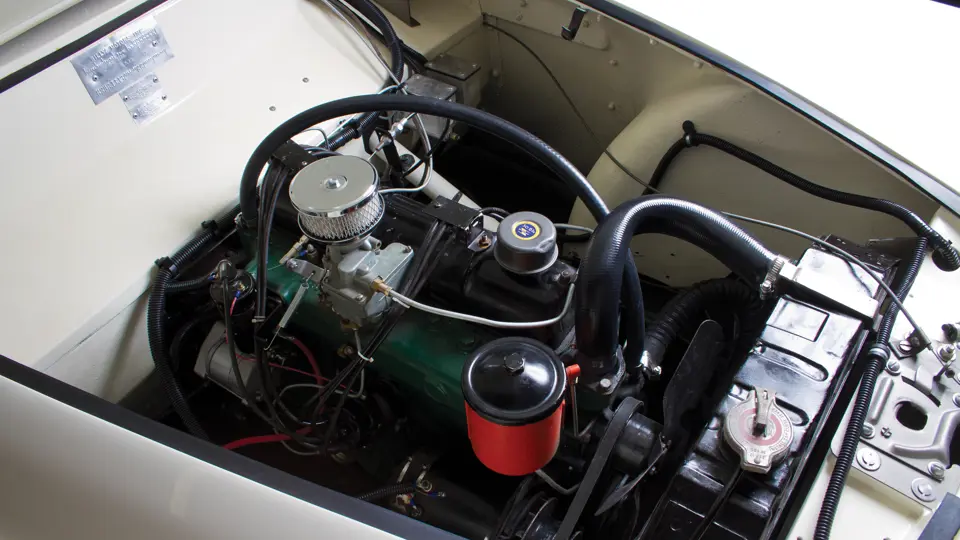



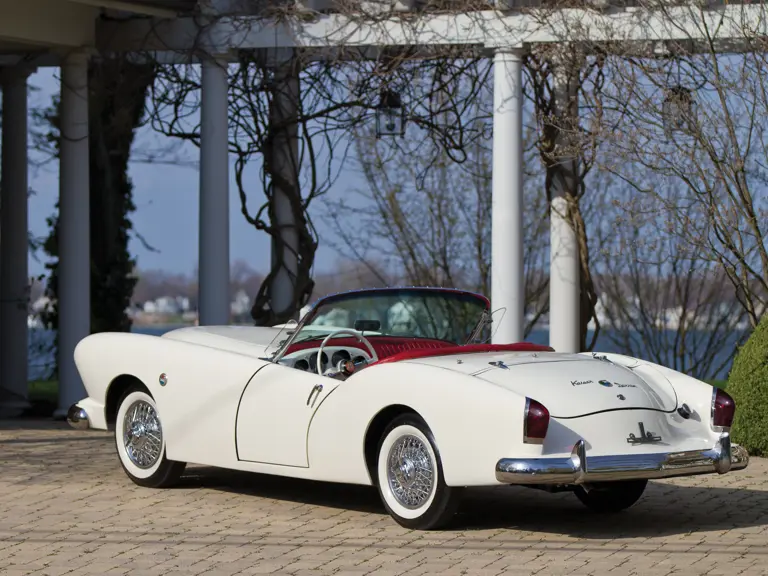
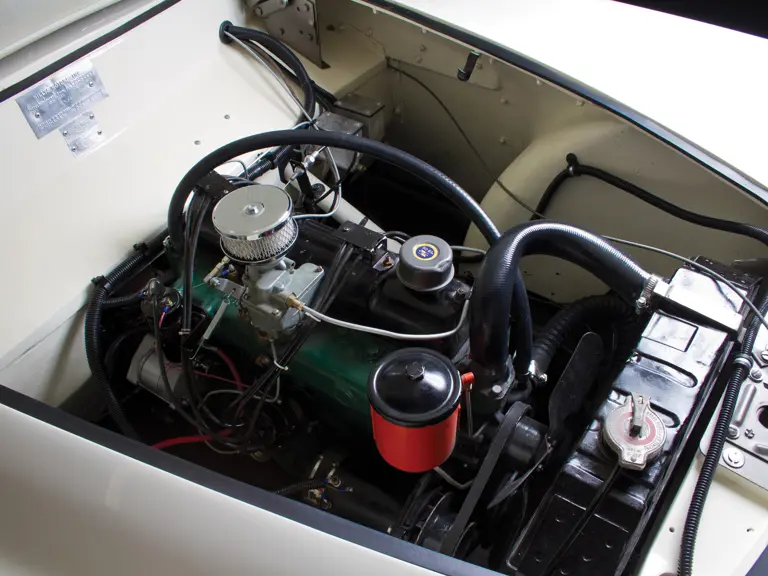
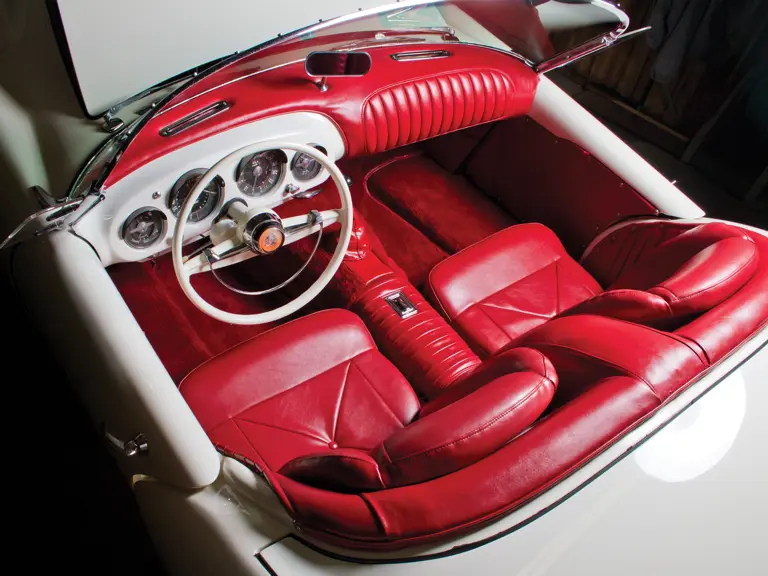
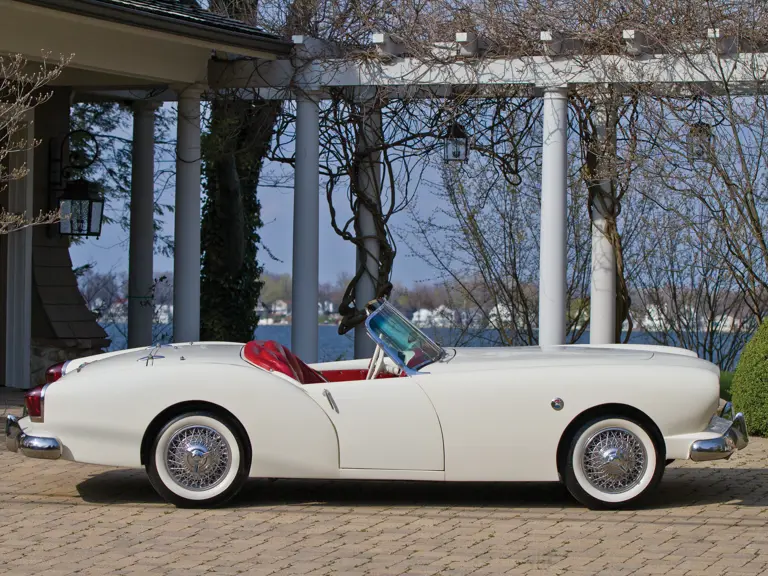
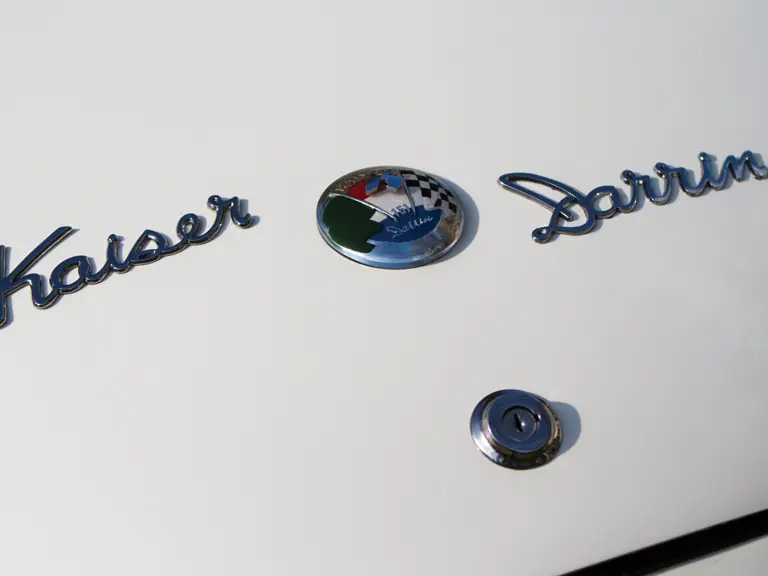
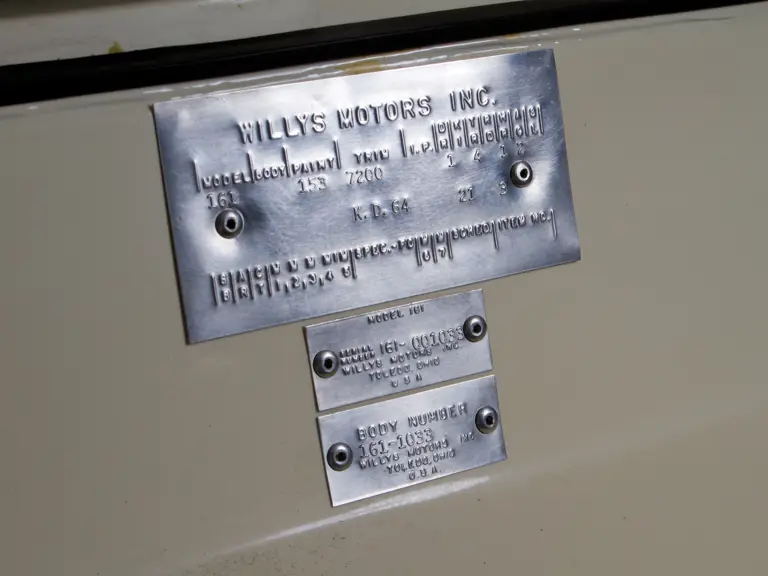
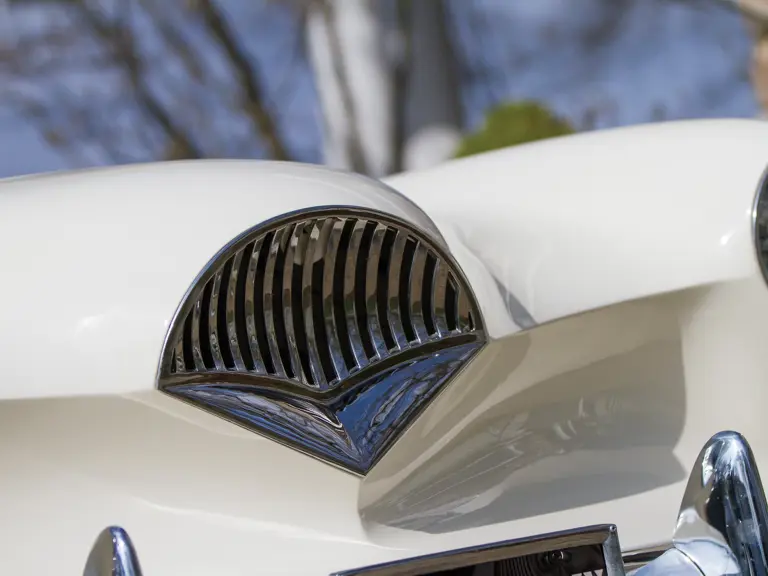
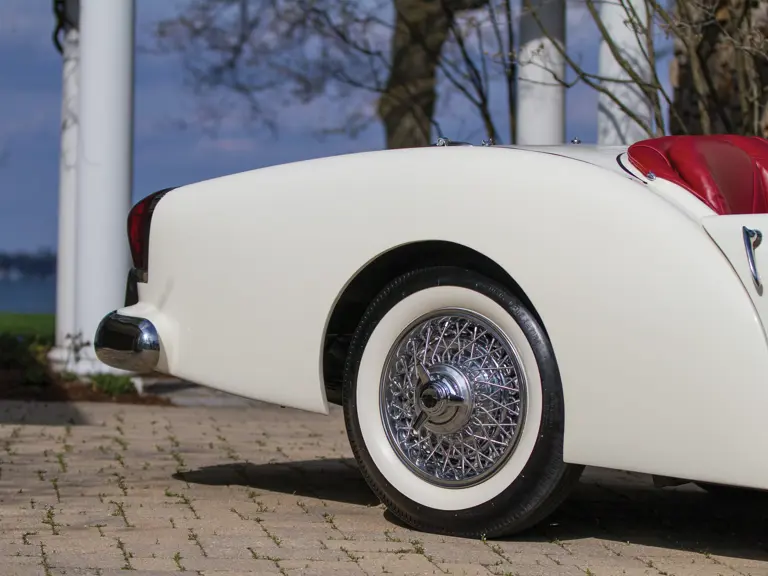
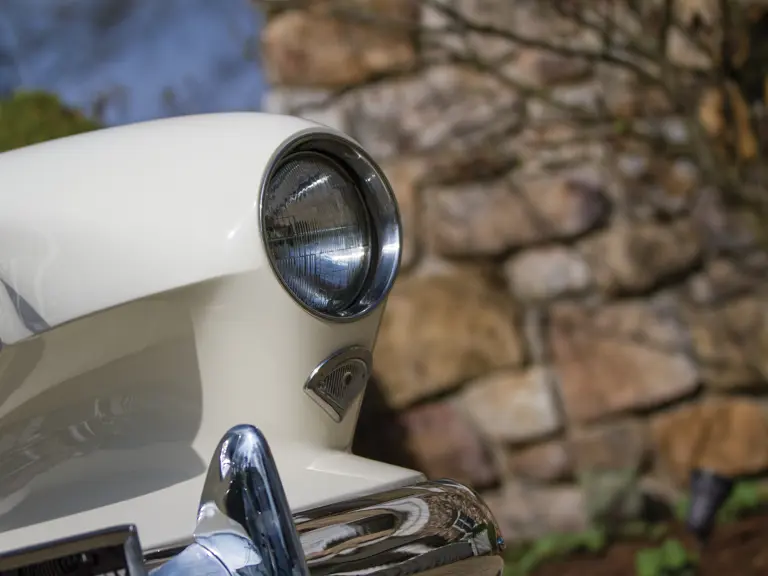

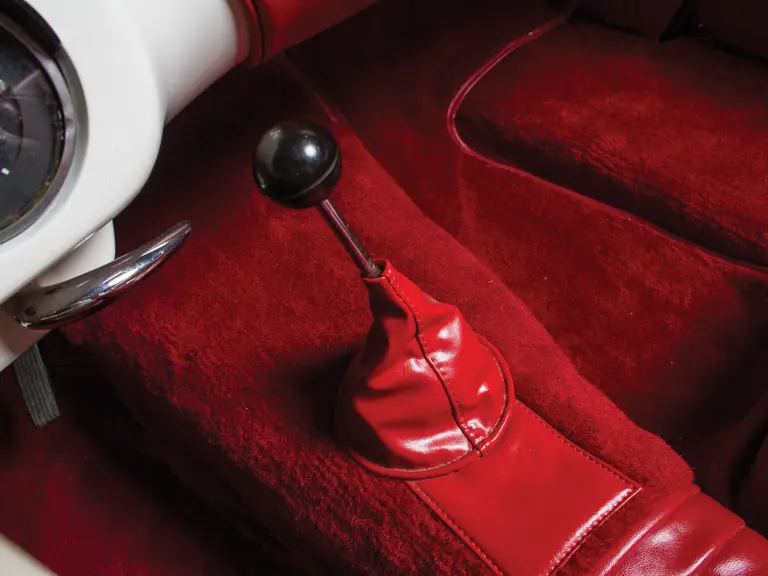

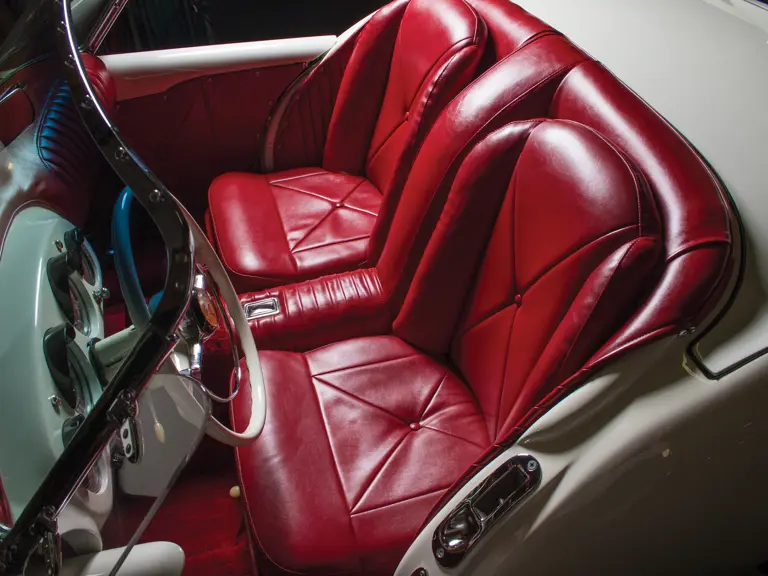
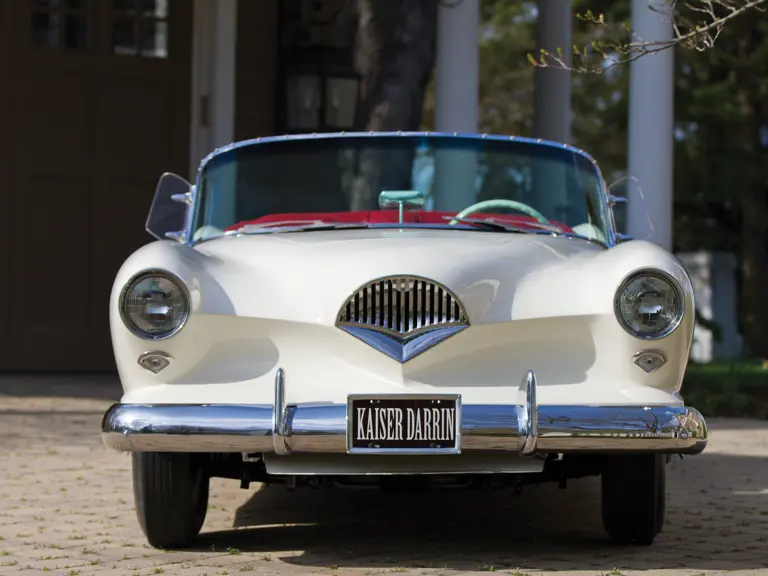
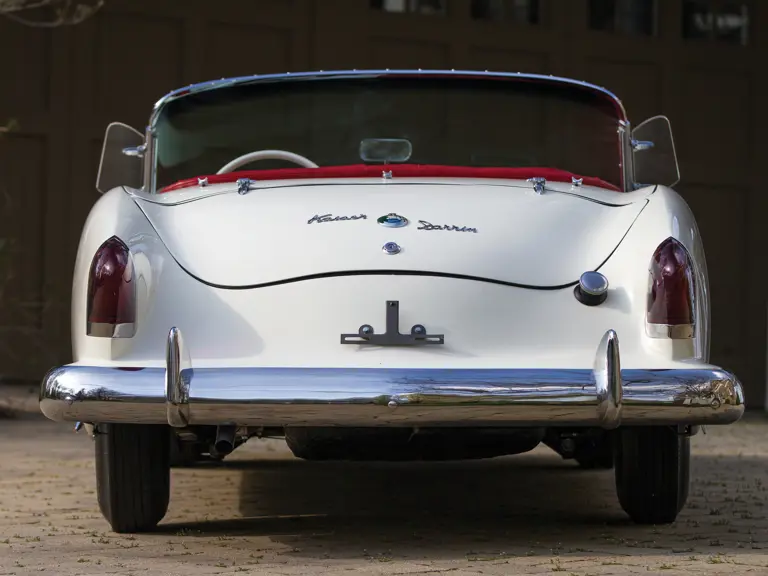
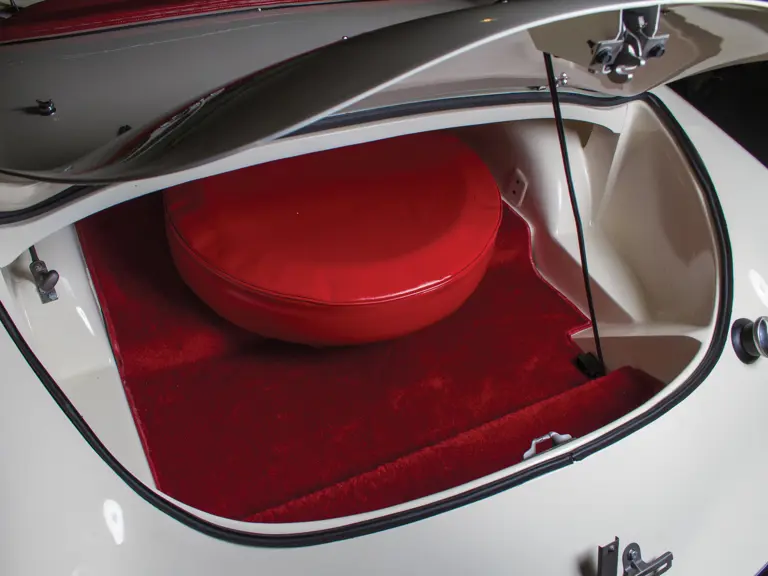
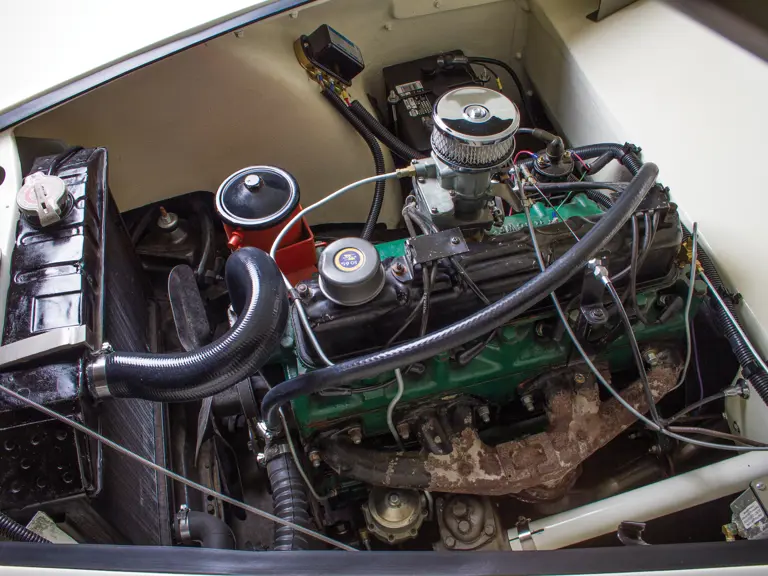
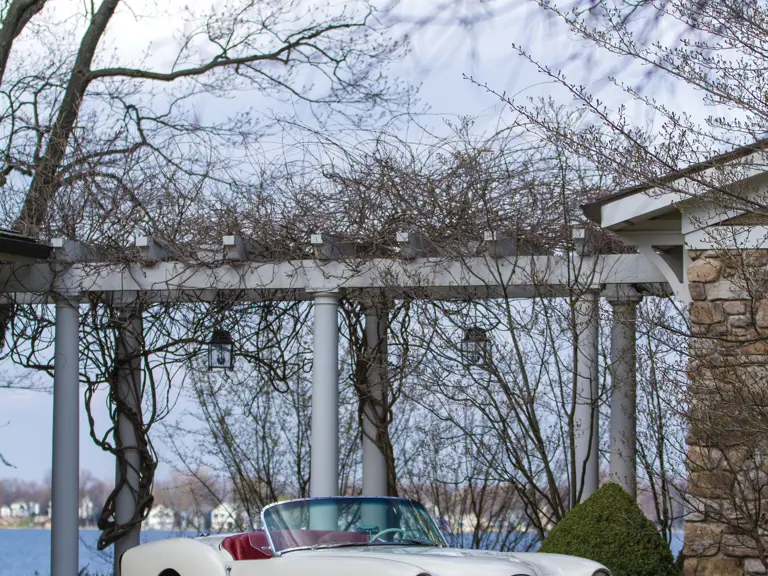

 | Monterey, California
| Monterey, California
